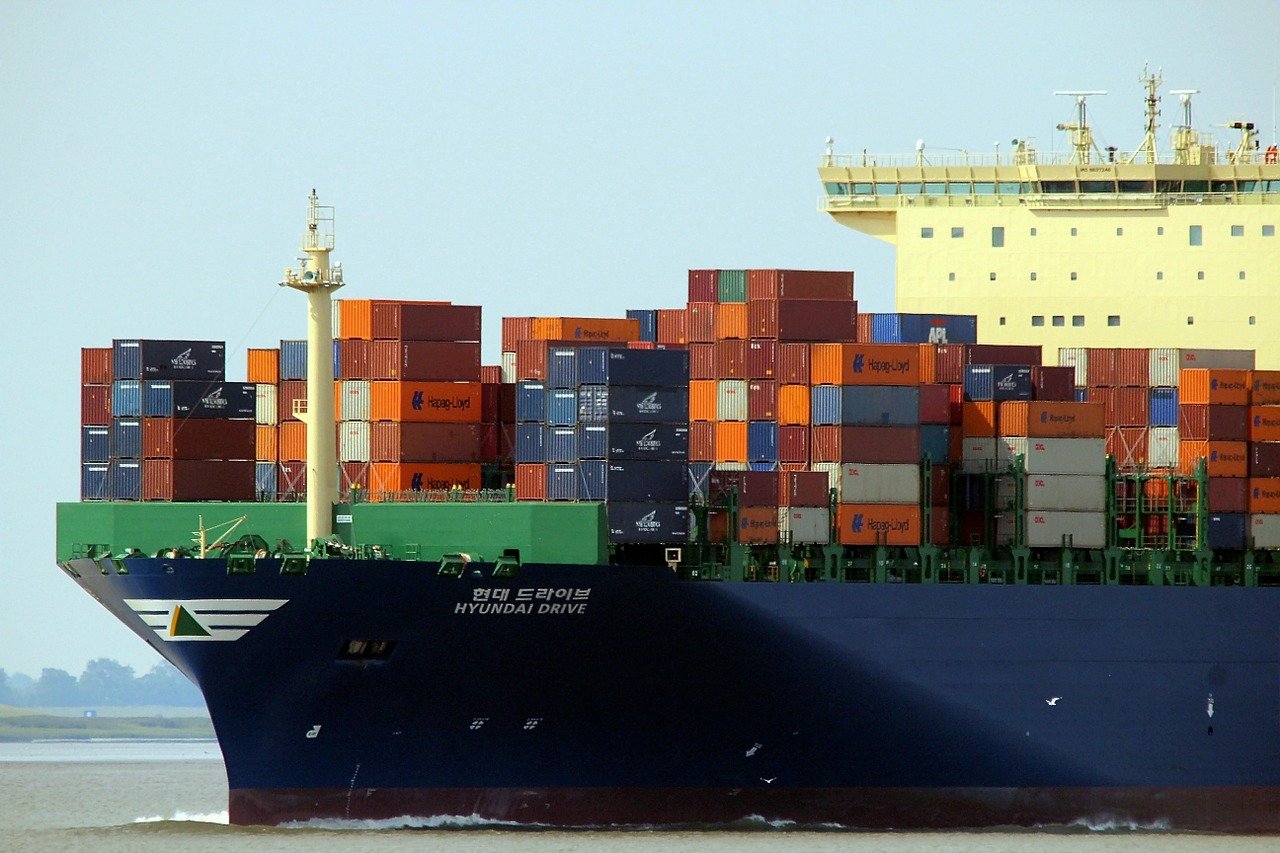A critical lesson many organizations have learned when measuring the success of analytics initiatives is that speed of deployment and widespread user adoption are key factors to consider. These are key benefits of analytic applications delivered with or embedded in ERP systems or business applications.
Analytic applications provide pre-built business intelligence (BI) and analytical capabilities that promise to democratize analytics because most of the hard work in transforming data to insights has already been done. However, the historical challenge these applications faced was that they weren’t built with agile cloud technology or modern data architectures that could keep up with the growing complexity, scale, and changing requirements of the line of business (LOB)-driven analytic requirements.
Read More
Topics: ERP, Fashion & Retail, Distribution, Supply Chain, Fashion & Apparel, Supply Chain Visibility, Supply Chain Network, Cloudsuite Fashion & Apparel, Infor CloudSuite PLM for Fashion, Infor CloudSuite Fashion PLM, Enterprise Software, Retail Supply Chain, Infor CloudSuite Fashion, Supply Chain Operations, Supply Chain Management, Infor CloudSuite M3, Infor CloudSuite ERP
Why settle for anything less?
Distributors often operate behind the scenes, making sure other businesses have what they need. The projects they support continue because tools, equipment, and supplies are where they needed to be. Patients have procedures because instruments are available. Structures are built because materials are ready. Restaurants can serve customers because food, drinks, plates, and pots are on hand.
Recent events revealed just how critical the distributor’s role is in the supply chain. In reality, it’s extremely complicated to seamlessly move such high volumes of goods. Especially as expectations and behaviors have evolved in the last decade, distributors have had to adapt their solutions, processes, and levels of service.
Historically, many distributors would customize enterprise resource planning solutions to meet their unique requirements. This approach, however, created an unwilling in-house IT cottage industry dedicated to supporting the infrastructure and modifications, instead of strategic initiatives. We see this during evaluations with prospective Infor customers; when distributors compare our CloudSuite solutions to their current footprint, we typically discover that hundreds if not thousands of their current modifications would no longer be needed. Because our solutions are designed for the distribution industry, the best practices those companies require are built in. For example, when HVAC and industrial product distributor, EMCO, moved to CloudSuite Distribution Enterprise, the company removed over 4000 modifications. EMCO no longer needed to maintain customizations and project manage long upgrade initiatives. That fluctuating, unpredictable overhead goes away forever because EMCO’s new mutli-tenant cloud solution is automatically updated monthly. Their technology is always current and always adding new distribution functionality to align with nuances and needs of this industry
Read More
Topics: ERP, Distribution, Supply Chain, Fashion & Apparel, Supply Chain Visibility, Supply Chain Network, digital disruption, Enterprise Software, Retail Supply Chain, Supply Chain Operations, Supply Chain Management, Infor CloudSuite M3, Infor CloudSuite ERP
The ability to execute, seamlessly and in real-time, is critical as your company works to develop a continuous supply chain. Being uniquely capable of connecting multiple facets of this execution -- not just to an order management system but also to TMS for transportation management and WMS for warehouse management will be key components to implementing continuous supply chain execution.
Integrated multi-party source-to-settle process
Sourcing execution or the ability to establish real-time connectivity to suppliers is key. What we are really speaking to here is the need to orchestrate end-to-end physical and financial operations between order management, global trade management, transportation, warehouse, product traceability, and even payables management.
Streamlined manufacturing
Manufacturing execution is focused on streamlining processes, driving better decision making and gaining productivity. Supply chains must optimize and automate the manufacturing process from raw materials and components to finished goods. Having the ability to anticipate and optimize lead times is crucial for downstream improvement.
Read More
Topics: ERP, Fashion & Retail, Distribution, Supply Chain, Fashion & Apparel, Supply Chain Visibility, Supply Chain Network, Cloudsuite Fashion & Apparel, Infor CloudSuite PLM for Fashion, Infor CloudSuite Fashion PLM, Enterprise Software, Retail Supply Chain, Infor CloudSuite Fashion, Supply Chain Operations, Supply Chain Management, Infor CloudSuite M3, Infor CloudSuite ERP
Asset Investment Planning enables your asset-intensive organization to determine which asset investments will enable you to best meet your service level objectives with the right level of expenditure while minimizing the risk of asset failure. An API can also help you determine the best time to invest in order to smooth your capital expenditures over time.
Modern AIP solutions simplify the process of developing asset investment plans by allowing you to leverage the data that is already in your asset registry in your enterprise asset management (EAM) to tell you what assets your organization has, your work management system that manages maintenance operations, and your asset performance management (APM) system that monitors asset condition reliability.
You use that data to quantify four key inputs: Asset condition, asset criticality, business risk, and level of service. Asset condition allows you to visualize deterioration over the asset’s lifetime and establish where intervention is necessary. Asset criticality determines the impact the failure of an individual asset will have on your organization’s ability to realize your business objectives. Business risk determines the consequences of asset failure. Level of service required enables your organization to operationalize your organization’s policies, strategies and objectives, tie those to KPIs and then link that to level of service requirements.
Read More
Topics: ERP, Distribution, Supply Chain, Supply Chain Visibility, Supply Chain Network, Enterprise Asset Management, Enterprise Software, Retail Supply Chain, Infor CloudSuite Fashion, Supply Chain Operations, Supply Chain Management, Infor CloudSuite M3, Infor CloudSuite ERP
The future of planning is connected, intelligent, and continuous. Yet many companies remain so far away from this vision, it often seems unachievable. With many planning processes being so siloed and disconnected from execution, they can feel ineffective.
Fortunately, evaluations of the planning landscape reveal many organizations are adopting technologies that move towards a de-siloed, network-based approach to planning. For these companies, the primary goal centers around connecting planning capabilities to “a single version of the truth.” To optimize planning capabilities, it crucial to achieve this connection at the enterprise level as well as into the broader supply network.
But to do this involves using integrated business planning (IBP) or sales and operations planning (S&OP) to collaborate and analyze, perform demand planning to improve forecasting, optimize supply planning, and facilitate synchronization. Each of these areas are critical to a successful planning process and are more powerful when integrated and connected across a network.
Read More
Topics: ERP, Fashion & Retail, Distribution, Supply Chain, Fashion & Apparel, Supply Chain Visibility, Supply Chain Network, Cloudsuite Fashion & Apparel, Infor CloudSuite PLM for Fashion, Infor CloudSuite Fashion PLM, Enterprise Software, Retail Supply Chain, Infor CloudSuite Fashion, Supply Chain Operations, Supply Chain Management, Infor CloudSuite M3, Infor CloudSuite ERP
An estimated $350 billion of invoices are typically involved in supply chain finance programs. Known as "reverse factoring," this process assists suppliers in obtaining the capital needed to keep supply chains humming, as described by Aite Group. Opposed to traditional receivables financing or factoring, reverse factoring is driven by the buyer and its relationship to a bank or finance provider, with capital being made available to suppliers based on the relationship parameters.
Banks are happy to step in, within specific jurisdictions and credit profiles. Research firm Coalition reports that banks logged approximately $12.7 billion in revenue in the first half of 2020 via total supply chain finance volumes. However, limitations are significant, and often times, the suppliers that need financing the most are excluded from such programs.
Read More
Topics: ERP, Fashion & Retail, Distribution, Supply Chain, Fashion & Apparel, Supply Chain Visibility, Supply Chain Network, Cloudsuite Fashion & Apparel, Infor CloudSuite PLM for Fashion, Infor CloudSuite Fashion PLM, Enterprise Software, Retail Supply Chain, Infor CloudSuite Fashion, Supply Chain Operations, Supply Chain Management, Infor CloudSuite M3, Infor CloudSuite ERP
Regardless of size or industry, asset-intensive organizations are always looking to do more with less. For a food and beverage manufacturer that means finding ways to extend asset life to minimize costs, improve food and worker safety and reduce waste while performing the right maintenance on the right equipment, at the right moment to avoid downtime.
Some businesses have been making do and getting by with asset management strategies that sell them short, driving up the cost of maintenance labor and materials and increasing the risk that critical assets will be down when they’re most urgently needed. The scene has been shifting over the past several years, with Enterprise Asset Management (EAM) offering greater visibility and sophistication for maintenance operations.
But business rarely sits still for very long. And with the rapid rise of Industry 4.0, it’s essential for asset management to keep up. Maintenance 4.0 is the set of tools and strategies that is helping food and beverage companies optimize operations by deploying the mountains of data now available to keep equipment and production lines in peak operating condition. Infor’s Best Practice Guide, “Why your EAM strategy must evolve to increase food safety,” explains how it works and lays out the five essential components of an Asset Performance Management (APM) platform.
Read More
Topics: ERP, Distribution, Supply Chain, Warehouse Management Systems, Supply Chain Network, Cloud BI, Enterprise Asset Management, Enterprise Software, WMS
Automotive manufacturers and their suppliers continue to increase their collaboration in various ways, whether this be through robotic process automation (RPA), data collection and exchange, or other methods that provide insights for scalability. With true, multi-enterprise collaboration, there are cross-training opportunities to convey customer needs and preferences for product innovation, giving manufacturers the ability to make rapid adjustments in real time. Collaborative behavior makes this happen, and it all starts with transparency.
However, building real trust, collaboration, and transparency goes beyond using a specific technology or workflow. At its core, this is about changing the culture of automotive OEMs and throughout their suppliers at every tier. Automotive companies who are true leaders in the industry consider the health of the entire supply network, not just their immediate interests. Making this change—as with almost all substantive transformations—requires change be from the top executive level down.
Read More
Topics: ERP, Manufacturing, Distribution, Supply Chain, Supply Chain Visibility, Supply Chain Network, Industrial Manufacturing, Cloud BI, Enterprise Asset Management, Enterprise Software, Supply Chain Operations, Supply Chain Management, Infor CloudSuite M3, Infor CloudSuite ERP
Disruptions to the supply chain
If any event reveals the need for resilient supply chains, it’s COVID-19. The disruptions shook every industry, including automobile. Early 2020 forecasts projected a significant drop in new vehicle sales, but ultimately turned out much better with only a 15% reduction from the total 2019 sales.
It’s no surprise the pandemic has prompted several automotive companies to embrace new supply chain strategies that allowed them to recover quickly while also setting them up for future growth. Many automotive companies stood up crisis teams and control towers to improve visibility and maintain profitability, which in turn developed into an advanced strategy around predictive risk management and multi tier supplier collaboration.
Even with the automotive industry embracing new supply chain practices, another disruption has risen in the semiconductor chip shortage. With modern vehicles often containing thousands of semiconductors, this crisis underscores another dimension of supply chain risk exposure and highlights the critical need to collaborate with multi tier partners for globally limited supplies.
Read More
Topics: ERP, Distribution, Supply Chain, Supply Chain Visibility, Supply Chain Network, Cloud BI, Enterprise Asset Management, Enterprise Software, Supply Chain Operations, Supply Chain Management, Infor CloudSuite M3, Infor CloudSuite ERP
To keep up with lofty yet mandatory customer expectations, your supply chain can’t afford to stop investing in technology that improves processes, connects business partners and IoT data, and uses machine learning algorithms to improve business outcomes. If the people tasked with running your supply chain are relying on poorly built or outdated systems filled with data quality issues, then they need new technology solutions and strategies to overcome these shortcomings to create true value.
As you strive to balance cost while simultaneously improve your customer service, you are no doubt confronting issues that require better collaboration amongst your group as well as the numerous companies you interact with daily. The days of each department or company working on an island while hoping groups further downstream can correct any mistakes are long gone.
Nowadays, those of us in the supply chain space realize the need for ongoing collaboration with everyone who touches our supply chain. This can take the form of sharing data around forecasts, inventory positions, capacity plans, order status (both at rest and in-transit), as well as visibility into shipments.
Read More
Topics: ERP, Manufacturing, Distribution, Rentals & Equipment, Supply Chain, Fashion & Apparel, Infor M3 ERP, Enterprise Software, Retail Supply Chain, WMS, Supply Chain Management











